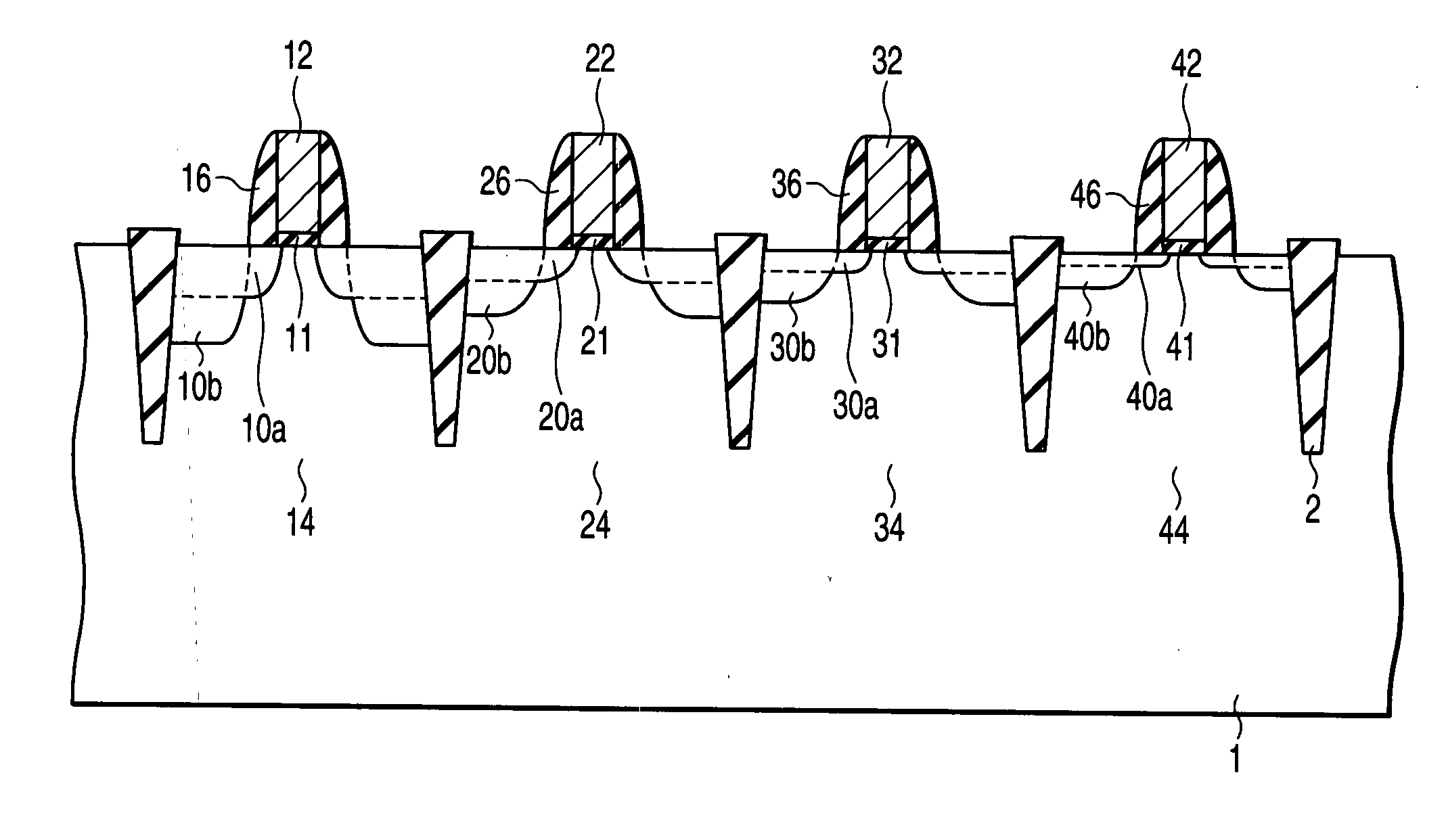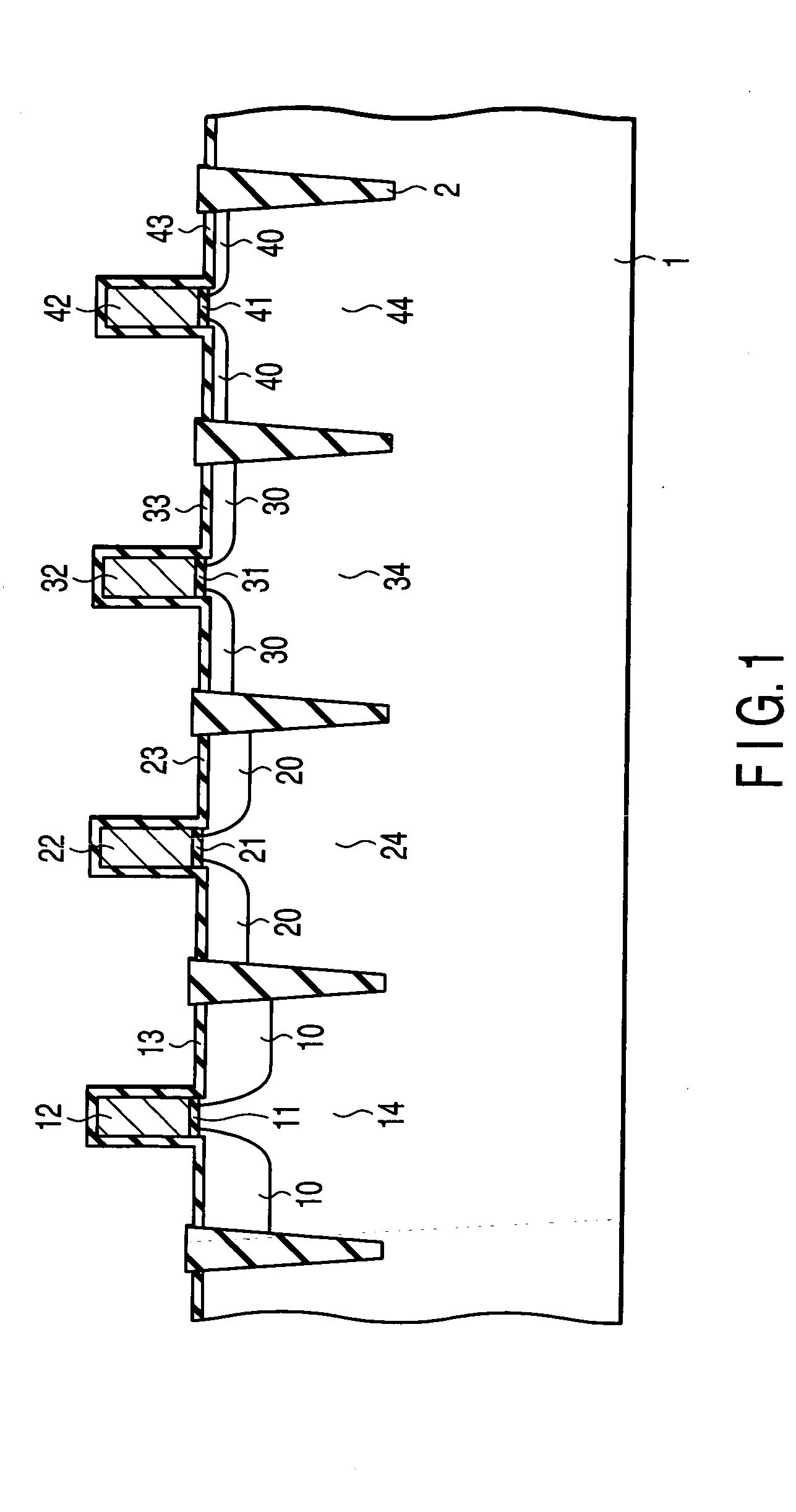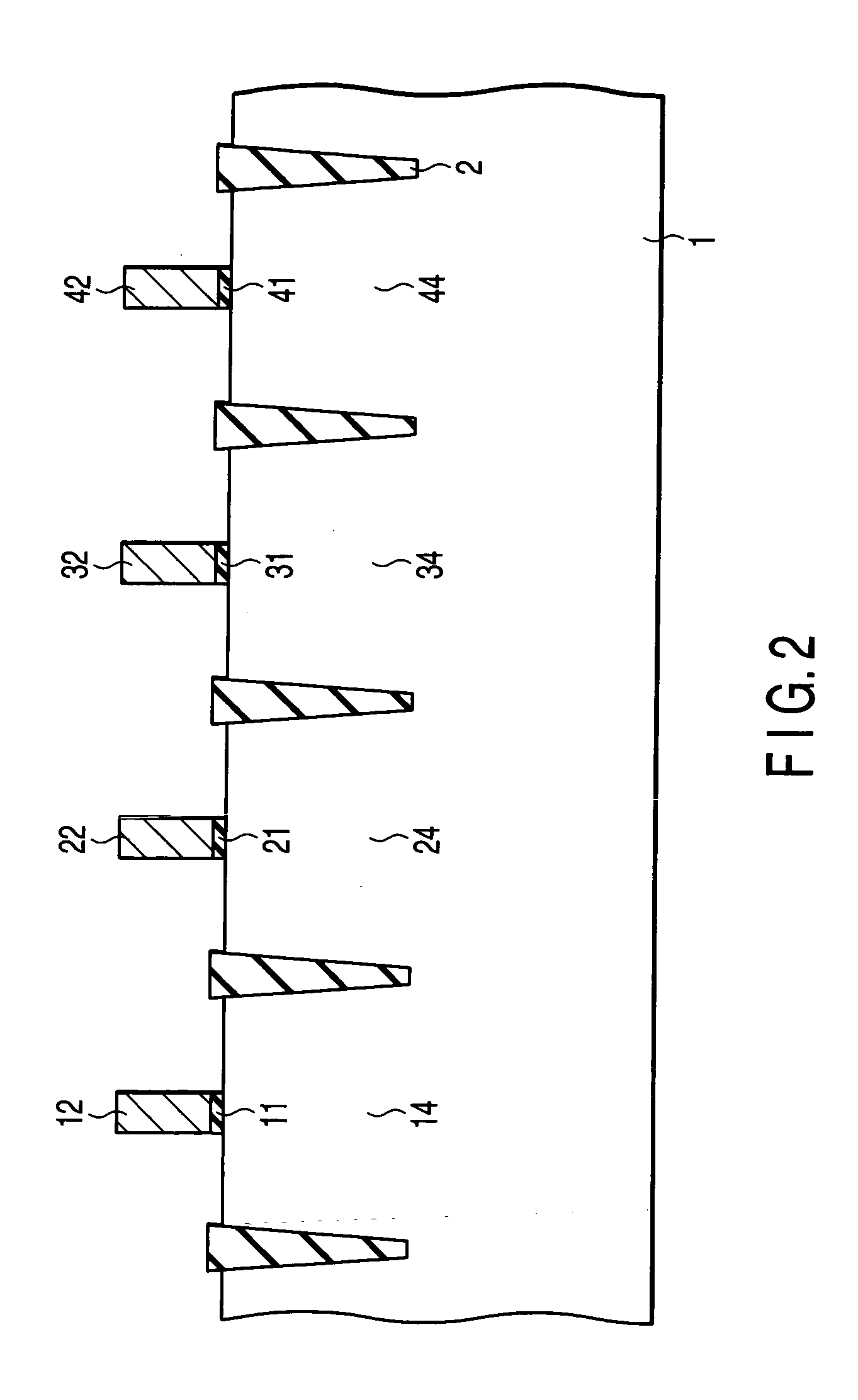Method of manufacturing semiconductor device
a manufacturing method and semiconductor technology, applied in the direction of transistors, electrical devices, basic electric elements, etc., can solve the problems of low concentration of impurities in the ldd region and more serious problems
- Summary
- Abstract
- Description
- Claims
- Application Information
AI Technical Summary
Benefits of technology
Problems solved by technology
Method used
Image
Examples
first embodiment
[0038]FIG. 1 is a cross-sectional view of a semiconductor device according to the first embodiment of the present invention. To be more specific, FIG. 1 is a cross-sectional view of low-concentration impurity diffusion regions (which will be hereinafter referred to as low-concentration impurity regions) before formations of deep source and drain regions. Part of the low-concentration impurity regions will become LDD region layers.
[0039] The LDD regions are impurity diffusion layers having a relatively low concentration, which are formed at end portions of a drain region and a source region of a MOS transistor, which are located adjacent to the channel. When a MOS transistor is formed to include such LDD regions, an electric field concentratedly generated at the end portion of the drain region is reduced, thus restricting a hot carrier effect.
[0040] More specifically, when the LDD regions are provided in the above manner, resistor element is connected between the channel and drain ...
second embodiment
[0086]FIG. 13 is a cross-sectional view of a semiconductor device according to the second embodiment of the present invention.
[0087] In the second embodiment, low-concentration impurity regions 10, 20, 50 and 60 having different junction depths are formed on the same semiconductor substrate 1. The junction depth of the low-concentration impurity regions 10 is larger than that of the low-concentration impurity regions 20, which is larger than that of the low-concentration impurity regions 50. The junction depth of the low-concentration impurity regions 50 is substantially equal to that of the low-concentration impurity regions 60.
[0088] The low-concentration impurity regions 50 are different from the low-concentration impurity regions 60 regarding the depth at which the impurity concentration is peak in the impurity density distribution of the low-concentration impurity regions. FIG. 14 is a cross-sectional view showing depths at which the impurity concentrations of the low-concent...
PUM
 Login to View More
Login to View More Abstract
Description
Claims
Application Information
 Login to View More
Login to View More - R&D
- Intellectual Property
- Life Sciences
- Materials
- Tech Scout
- Unparalleled Data Quality
- Higher Quality Content
- 60% Fewer Hallucinations
Browse by: Latest US Patents, China's latest patents, Technical Efficacy Thesaurus, Application Domain, Technology Topic, Popular Technical Reports.
© 2025 PatSnap. All rights reserved.Legal|Privacy policy|Modern Slavery Act Transparency Statement|Sitemap|About US| Contact US: help@patsnap.com



